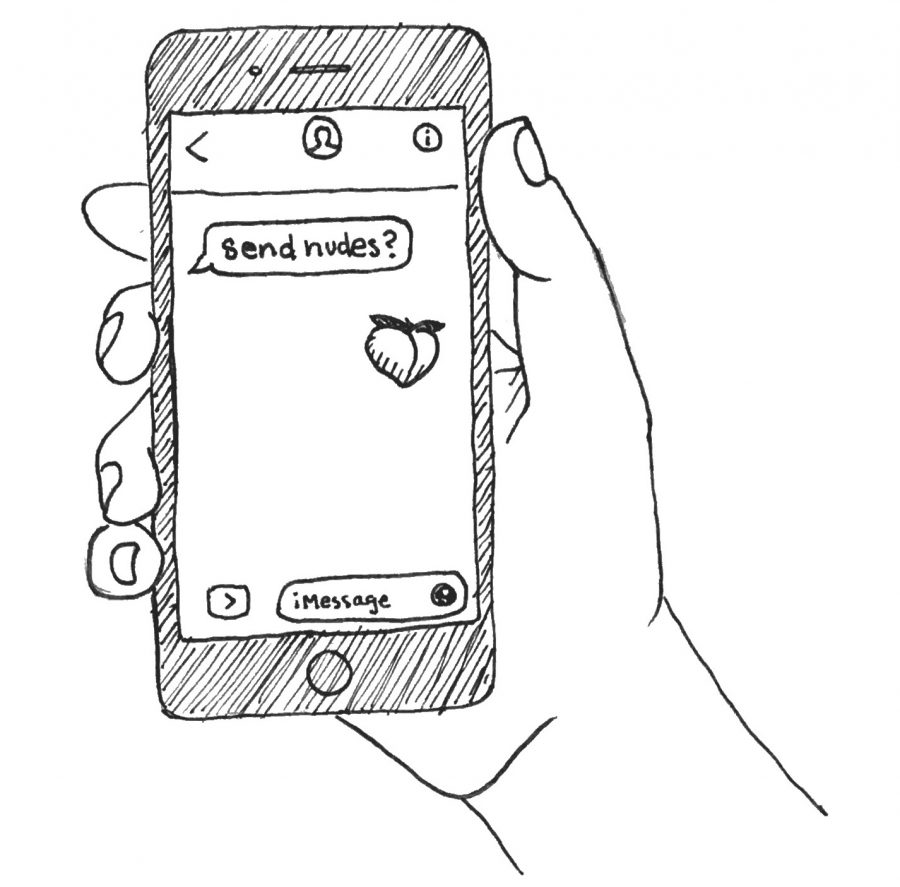Illegal Texting
Parker Brings Awareness To Student Sexting
Sex offender: “A person who has been convicted of a sexual offense such as rape or molestation,” according to the Legal Dictionary of The Free Dictionary.
While most students and faculty at Parker reasonably have a negative stigma over those two words, many don’t know that their own friend, student, or child could become exactly that by sending or receiving sexually explicit pictures.
On November 1, the Upper School faculty was asked to come to a meeting led by a lawyer who represents Parker, Jennifer Hansen, about the law concerning minors sexting — sending of sexually explicit photographs or messages via cell phone, as well as giving a talk on a variety of different issues concerning students’ use of social media.
“I think you always want to use faculty meetings for opportunities of professional development and education,” Division Head Ruth Jurgensen, who organized the meeting, said, “As we’re always cognizant of the issues around social media and the impulsivity of students in general, I just wanted to make sure that we captured some of the changes in law.”
Jurgensen believes sexting is taking place at Parker, and it’s elsewhere. “I’m sure it’s happening everywhere,” she said, “and while it’s very bad to be on my radar, it’s far worse to be on a prosecutor’s.”
In the week that followed the meeting, some US advisors thought it was a pressing enough issue to talk to their advisees about what sexting entails and what punishments could be given if caught.
“I think the faculty meeting was really useful because it’s extremely easy to think, ‘It’s ok because everyone is doing it,’ but it’s really not,” Upper School advisor Patrick McHale said. “You really take a big chance when you engage in that behaviour.”
Freshman Tomas Catoggio gives insight to Weekly readers about sexting.
“I really learned that even if you’re under pressure to send something or if you receive something that people want you to forward to them,” Freshman Tomas Catoggio said, “always be smart and delete or decline everything and everyone.”
Under the Commonwealth Law, anyone could be charged with child pornography offences if they take, send, receive, or store sexual or explicit photos of someone who is under 18 or who looks under 18, according to Victoria Legal Aid. Conviction for an offence of child pornography, results in registering for a sex offender. That means that a 16 year old guy, for example, could send a nude picture of himself to his 16 year old girlfriend, but if her parents’ prosecuted, the girl’s boyfriend could be charged with a child pornography offense. Even the same could be said if the guy repeatedly implored from the girl, or vice versa, to send any explicit photos to them.
The punishment would be more if that girl shared those photos with her friends or posted them on social media. All offences could lead to juvenile prosecution where on a case by case basis, either minor would be forced to receive counseling, perform community service, pay a fine, serve probation, and or serve time in a juvenile facility.
Hansen also informed teachers and staff that juniors and seniors, who are 17 or 18, have higher risks than other students at the school because they could be subject to felonies, even criminal punishment.
Of such a situation, Jurgensen said, “Something like this is out of my hands.”
Upper School health teacher Winnie Kearns is not surprised that students are engaging in sexting.
“In adolescence, it’s perfectly normal to be curious about exploring themselves physically and the fact that technology is such an integral part of their lives and the fact that technology is used in that way and manner,” Upper School health teacher Winnie Kearns said. “The issue is that the risk is tremendous for exposure, for misuse, for shaming, and I think the legal aspect comes in to mitigate that risk.”
According to ChildGuardOnline, 20% of teens report having sent nude or semi-nude photos and videos of themselves. Girls ages 13 through 16 make up 11% of teens sharing this type of material. 39% of teens have sent suggestive text messages, emails, or instant messages.
The statistics show that teen sexting is not rare in the U.S. and, presumptively, neither is it rare among Parker teens.
Kearns said, “In my opinion, helping to educate students about their relationships, about developing healthy relationships, about appropriate boundaries, about power and risk and things of that nature is the key to all of it.”








